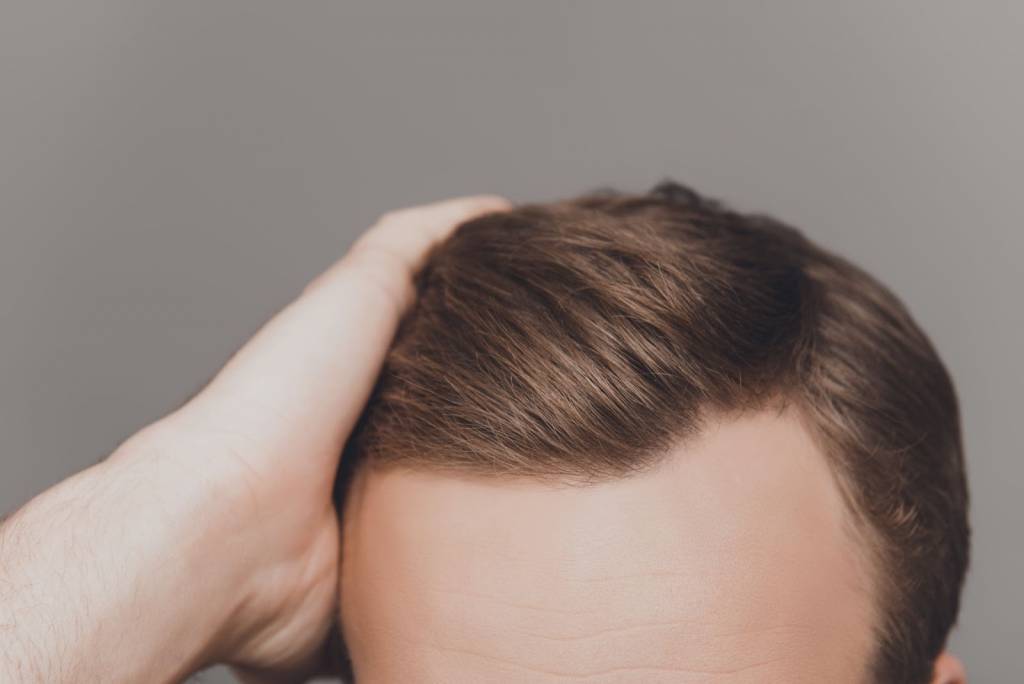PRE-HAIR TRANSPLANT
Even before the actual hair transplantation procedure or sessions begin, the patient must meet with the concerned surgeon to fully understand the process, do’s and don’ts, goals, and his or her preferred method of proceeding. In Rejoice hair transplant clinic, Mumbai a thorough examination of the patient’s scalp is done to determine the most suitable approach for achieving the best outcomes for a specific patient. This involves determining the number of therapy sessions needed for a specific patient, which can range from one to many depending on the scalp examination. A pre-operative folliscopy aids in determining the density of the patient’s existing hair, which is then used to reliably measure the post-operative effects of newly transplanted hair. For better outcomes, some patients are recommended to use topical minoxidil and vitamins.
“More specifically, any drug other than the one recommended for the operation should be avoided in order to avoid affecting the procedure’s final performance. Consumption of alcohol and smoking can also result in poor grafting outcomes.”- Says Dr. Shankar Sawant who is one of the best hair transplant in Mumbai.
DURING THE HAIR TRANSPLANT PROCEDURE
- The procedure for hair transplantation takes around 6 to 8 hours.
- In both the donor and recipient locations, patients are given local anesthesia.
- Patients should not experience any discomfort during the operation until anesthesia has been administered.
- Within a day or two of surgery, the majority of patients are back to normal.
- For a few days, some patients may experience numbness or soreness. It takes three to five months for the transplanted follicles to begin producing new hair. The new hair that grows in is thin at first, but it thickens and fills out over time.
- The transplanted hair will be fully mature in eight to ten months and will continue to grow for the rest of your life.
- If done by an experienced hair transplant surgeon, this will produce natural looking results.
PRECAUTIONS, EXPECTATIONS, AND RECOVERY TIME AFTER HAIR TRANSPLANTATION

Precaution: It’s important to obey post-surgery directions and care for the grafts properly. For a few days, swelling of the scalp and face is normal. For a few days, you’ll be on antibiotics, steroids, and painkillers, and you’ll be prescribed Minoxidil and/or Finasteride.
For a few days after the transplant, the grafts are repeatedly wetted with saline. The next day, the hair is washed with a diluted shampoo in a particular manner to avoid disturbing the grafts. They will finally fall out after two weeks, and new growth will take three to six months to appear. The post-op wound treatment of the scar is critical in the FUT process, and the sutures are removed after a week.
Expectations: The scalp is sensitive and tender after surgery, and it will need special attention for a few days to ensure proper healing. To relieve any residual discomfort, pain medications, antibiotics, or anti-inflammatory drugs may be prescribed for a few days. To avoid excessive contact or injury, a bandage around the scalp for 2-3 days may be recommended. After the service, you will go back to work in 2 to 5 days.
Time to Recover: Within 2-3 weeks of surgery, the transplanted hair will fall out. In a few months, you should see hair growth. After 6 to 9 months, 60 percent of new hair growth can be seen. While the efficacy of minoxidil (Rogaine) in improving hair growth after transplantation has not been confirmed, it may be prescribed to certain patients.
ARE HAIR TRANSPLANTS A LONG-TERM SOLUTION?
If you want FUE or FUT for your hair transplant, the results of both procedures in terms of hair growth are permanent. There is a clear reason for this. The new hair that develops from these planted roots is often permanent since the hair grafted for the procedures is from the back or side of the head, which are areas with naturally permanent hair roots. That is to say, you will never lose any of your hair again.
However, after one month of hair transplantation, you will begin to lose the transplanted hair, which may last for another two months. The temporary shedding process is followed by a permanent growth phase in which hair grows at a regular rate. In the future, no additional treatment or out-of-the-way care will be needed to help grow or maintain hair development.
